M. Betts, P.S. Brandon, Martin Betts Nfa9780419203704, 0419203702
Table of contents :
Book Cover……Page 1
Half-Title……Page 2
Title……Page 5
Copyright……Page 6
Contents……Page 8
Contributors……Page 17
Foreword……Page 23
The field of integrated construction information: an editorial overview……Page 30
PART ONE What is Integration and Why is it Important?……Page 37
1.1 INTRODUCTION……Page 39
1.2 WHY SHOULD WE PURSUE CIC?……Page 40
1.2.1 The new production philosophy……Page 41
1.2.2 Strategic IT planning……Page 42
1.2.3 A production and strategy synthesis……Page 44
1.3 A GENERIC DEFINITION OF INTEGRATION……Page 46
1.4 RESEARCH MAP……Page 48
1.5 CONCLUSIONS……Page 50
REFERENCES……Page 51
2.2 PLANNING ISSUES……Page 53
2.2.2 Leadership……Page 54
2.2.4 Resource commitment……Page 55
2.3 ORGANIZATIONAL ISSUES……Page 56
2.3.2 Changes in organizational structure……Page 57
2.4 DEVELOPMENT AND MANAGEMENT ISSUES……Page 58
2.4.2 Centralization vs. decentralization of IT……Page 59
2.4.4 Results control system……Page 60
2.4.6 Operational dependence……Page 61
2.6 RECENT IT RESEARCH AT CIFE……Page 62
2.7.2 Leadership……Page 64
2.7.6 A different perspective on IT……Page 65
2.7.11 Centralization vs. decentralization of IT……Page 66
2.8 CONCLUSIONS……Page 67
REFERENCES……Page 68
3.2 THE GROWTH OF IT IN CONSTRUCTION……Page 71
3.2.3 Stage 3: mid 1980s to late 1980s……Page 72
3.2.4 Stage 4: early 1990s……Page 73
3.3 MATCHING CONSTRUCTION TO THE STANDARD GROWTH MODEL……Page 74
3.4 CURRENT INDUSTRY TRENDS: NEW BARRIERS TO INTEGRATION……Page 75
3.5 DOWN-SIZING—REASONS FOR ADOPTION……Page 76
3.7 OPEN SYSTEMS……Page 78
3.8 THE USE OF ELECTRONIC DATA INTERCHANGE (EDI)……Page 79
3.9 THE USE OF PRODUCT DATA INTERCHANGE (PDI)……Page 81
3.10.1 Automatic identification……Page 82
3.10.2 Broadband communications……Page 83
REFERENCES……Page 84
4.1 SETTING THE SCENE……Page 87
4.1.1 Who wants integration?……Page 88
4.1.2 Concepts, objects and data……Page 89
4.1.3 Models and integration……Page 91
4.1.4 Where does the model end and the world begin?……Page 92
4.2.1 The life cycle and knowledge feedback……Page 93
4.2.2 Cost, time and value……Page 94
4.2.3 Environmental harmony……Page 96
4.2.4 Striving for quality……Page 97
4.3.1 Pawns in the process……Page 98
4.3.2 Sustainable islands……Page 99
4.3.3 Windows of understanding……Page 100
4.4.1 Mechanisms of change……Page 102
REFERENCE……Page 103
5.1 INTRODUCTION……Page 104
5.1.1 Existing information transfer to construction designers……Page 105
5.1.2 The relationships between designers and information……Page 106
5.2.1 Approaches to knowledge structure……Page 108
5.2.2 Pepper’s world hypotheses……Page 109
Contextualism……Page 110
Mechanism……Page 111
Formism……Page 112
5.2.3 Kolb’s learning style theory……Page 113
Accommodator design learners……Page 116
Assimilator design learners……Page 117
Converger design learners……Page 118
5.2.4 The related processes of learning and design……Page 119
Design orientation based on Pepper’s Contextualism……Page 120
Design orientation based on Pepper’s Organicism……Page 121
Design orientation based on Pepper’s Formism……Page 122
5.3 INFORMATION SYSTEM DEVELOPMENT……Page 123
Case study I: ICCARUS (intelligent command and control—acquisition and review using simulation)……Page 127
Case study II: Quality—our definition……Page 128
REFERENCES……Page 129
PART TWO The history of construction integration……Page 132
6.1.1 CIDB is created……Page 134
6.2.1 Basic recommendations……Page 135
6.2.2 IBCC 1954–59……Page 136
6.3 ORIGIN OF THE SFB SYSTEM……Page 137
6.4 DEVELOPMENT IN THE 1960S AND ITS CONSEQUENCES……Page 139
6.5.1 The CI/SfB and CPI common arrangement……Page 141
6.5.2 The CBC/SfB……Page 142
6.6 FURTHER DEVELOPMENTS……Page 143
6.7.1 Building classification……Page 144
6.7.2 ‘Construction’ in the ‘universe’……Page 145
6.7.3 The flow of information in the construction industry……Page 146
6.8 CONCLUSION AFTER 40 YEARS OF CONCEPTUAL DEVELOPMENT AND TESTING……Page 148
REFERENCES……Page 149
CHAPTER 7 Logical structure of classification systems……Page 150
7.1 THE RESOURCE MODEL……Page 154
7.2 THE WORK MODEL……Page 156
7.2.1 z0 Work general……Page 159
7.3.1 z1 Setting out of primary points……Page 160
7.3.2 z2 Setting out of secondary points……Page 161
7.3.3 z3 Setting out of position points……Page 162
7.4.1 z4 Handling of materials……Page 163
7.4.2 z5 Placing in position……Page 164
7.4.3 z6 Operating of products……Page 165
7.5 REGULATION……Page 166
7.5.1 z7 Regulation of resources……Page 167
7.5.3 z9 Regulation of functions……Page 168
REFERENCES……Page 170
8.1 FROM THE ‘BEGINNING’ TO THE PRESENT STAGE……Page 171
8.2 THE PRESENT STAGE……Page 172
8.3 TECHNOLOGY-SUPPORTED INFORMATION AND INFORMATION SYSTEMS, AS WELL AS INFORMATION TECHNOLOGY, SHOULD BE CONSIDERED TOGETHER……Page 175
8.4 SYSTEMS RESEARCH……Page 176
8.5 PHYSICAL OBJECTS, THEIR PROPERTIES AND PERFORMANCE……Page 177
8.6 APPLICATION OF THE QUALITY CONCEPT……Page 178
8.7 CONTRIBUTIONS TO THE IMPROVEMENT OF BUILDING INFORMATION…….Page 179
REFERENCES……Page 180
9.1 A SET OF COMMON CONSIDERATIONS……Page 182
9.2 ORDERING AND CLASSIFICATION……Page 185
9.3 INFORMATION AND INFORMATION TECHNOLOGY (IT)……Page 186
9.4 FURTHER CONSIDERATIONS……Page 188
REFERENCES……Page 189
PART THREE Product modelling……Page 191
10.1 INTRODUCTION……Page 192
10.2 FROM COMPUTATION TO PRODUCTION INFORMATION……Page 193
10.3 INFORMATION AND INTEGRATION……Page 194
10.4.1 The concept……Page 195
10.4.2 ISO/STEP (ISO 10303)……Page 196
10.4.3 Product modelling……Page 198
10.4.4 Enabling technology……Page 199
10.4.5 Some problem areas……Page 200
10.4.6 The future……Page 202
10.5 SUMMARY……Page 204
REFERENCES……Page 205
11.1 WHY BUILDING MODELLING IS DIFFICULT……Page 207
11.2 DESIGN AS MODEL DEFINITION AS WELL AS MODEL INSTANCING……Page 210
11.3 RESEARCH STRATEGY……Page 211
11.4 ENGINEERING DATA MODEL (EDM)……Page 213
11.5 MODULAR INTEGRATION OF CAD KNOWLEDGE……Page 216
11.6 SOME CONSIDERATIONS REGARDING SPECIALIZATION……Page 219
11.7 A SYSTEM PERSPECTIVE OF VIEW TRANSLATION……Page 221
11.8 STATUS……Page 223
REFERENCES……Page 225
12.1 INTRODUCTION……Page 228
12.2 USE OF PDT IN THE COMBINE PROJECT……Page 231
12.2.1 Project definition……Page 232
12.2.3 COMBINE results……Page 234
12.3.2 Control integration……Page 236
12.3.3 Data and control integration……Page 239
12.4 COMBINE: PRESENT PHASE……Page 240
12.4.1 Project management extensions……Page 242
12.5 EVALUATION……Page 243
REFERENCES……Page 245
13.1 INTRODUCTION……Page 247
13.2.1 Modelling……Page 250
13.2.3 Reasoning……Page 251
13.2.5 Browsing documents……Page 252
13.3.2 The models of shells……Page 253
13.4.1 COMBINE……Page 254
13.4.2 ATLES……Page 257
REFERENCES……Page 262
PART FOUR Process and information modelling……Page 264
14.1 INTRODUCTION……Page 266
14.1.1 Off-line data exchange……Page 269
14.1.2 On-line information exchange……Page 271
14.2.1 Terminology and relationships……Page 272
14.2.2 Constructing a basic syntax……Page 274
14.3 INFORMATION ACCESS……Page 277
14.4 CONCLUSION……Page 278
REFERENCES……Page 281
15.1 INTRODUCTION……Page 283
15.2.2 Perspectives……Page 284
15.3.1 Domain perspectives……Page 285
Integration perspectives……Page 286
Identifying user perspectives……Page 289
15.3.2 Implementation perspectives……Page 290
15.3.3 Application perspectives……Page 291
REFERENCES……Page 292
16.1 THE PROBLEM……Page 294
16.2 THE IPSE 2.5 PROJECT AND PROCESSWISE……Page 296
16.3 ROLES AND RESPONSIBILITIES……Page 297
16.4 THE SELF-REPLICATING REFLECTIVE PRACTICE LOOP……Page 298
16.5 THE MODEL OF A DESIGN ORGANIZATION……Page 299
16.6 THE ROLE OBJECT……Page 301
16.7 THE STRUCTURE OF KNOWLEDGE IN THE ROLE OBJECT……Page 304
16.8 CONCLUSIONS……Page 309
REFERENCES……Page 310
17.1.1 Overview of the Penn State CIC research programme……Page 311
17.2.1 Development of the process model—the IBPM……Page 312
17.2.2 Development of a process-based information architecture……Page 313
17.2.3 Process and information synthesis……Page 314
17.3 APPLIED RESEARCH……Page 315
17.4 CURRENT RESEARCH……Page 316
17.4.4 Environmental efficiency management—Kathelene Bisko……Page 317
17.5 TRANSFERRING RESULTS TO INDUSTRY—PACE……Page 318
ACKNOWLEDGEMENTS……Page 319
REFERENCES……Page 320
PART FIVE Applications of integration……Page 322
18.1 INTRODUCTION……Page 324
18.2.2 Larger and more complex projects……Page 325
18.3.1 Conflict begins with the contract……Page 326
18.3.2 Typical problems……Page 327
18.4.1 Perceptions of information need……Page 328
18.4.2 Volume of information……Page 329
Timeliness……Page 330
18.4.4 Relationship between information types……Page 331
18.5.1 More paper not less……Page 333
18.5.2 Reducing the paper mountain……Page 334
18.6.1 Procedures and controls……Page 335
18.6.2 Reporting responsibility……Page 336
18.7.1 Overall concept……Page 337
18.7.2 Information management hierarchy……Page 339
18.7.3 An example information management system (IMoP)……Page 341
Variation control……Page 342
Tenancy management……Page 343
Project accounting……Page 344
Instruction management control……Page 345
18.8.1 Benefits of information management……Page 346
18.8.2 General conclusions……Page 347
REFERENCES……Page 348
19.1 INTRODUCTION……Page 349
19.2.2 High-level approaches: conceptual models……Page 350
19.2.4 Integrated information models—entities, activities and processes……Page 351
19.3.2 The AI perspective……Page 352
Case-based reasoning (CBR) in collaboration……Page 353
19.4.1 Information modelling issues in ICON……Page 354
19.4.2 Approaches to information modelling in ICON……Page 355
Rationale……Page 356
19.5 CONCLUSIONS……Page 357
REFERENCES……Page 358
20.1 INTRODUCTION……Page 359
20.2 TWO TYPOLOGIES OF DATA TRANSFER……Page 360
20.4 INFORMATION LEVEL INTEGRATION OF HETEROGENEOUS DATA……Page 362
20.5 DOCUMENT LEVEL INTEGRATION OF HETEROGENEOUS DATA……Page 364
20.6 FUNCTIONALITY OF THE DEMONSTRATION ICPDM SYSTEM……Page 365
20.7 THE CONCEPTUAL SCHEMA OF THE ICPDM SYSTEM……Page 366
20.8 CONCLUSIONS……Page 371
APPENDIX A: EXPRESS SCHEMA……Page 372
REFERENCES……Page 374
21.1 INTRODUCTION……Page 376
21.2.1 Detailed thermal simulation programs……Page 377
21.2.2 Airflow prediction……Page 378
21.2.3 Lighting design……Page 379
21.2.4 Comparison of BEP Tools……Page 380
21.3.2 The CAD System……Page 381
21.3.3 The product data model……Page 382
21.4 OBJECT MODELLING……Page 383
21.5 CONCLUSIONS……Page 385
REFERENCES……Page 386
22.2 METHODOLOGY……Page 388
22.3 OVERVIEW OF CURRENT HISTORICAL REPORTS AND DATA……Page 389
22.4.1 Data storage, access and distribution……Page 390
22.4.2 Information extraction processes……Page 391
22.4.5 Data maintenance……Page 392
22.5 FUTURE HISTORICAL INFORMATION SYSTEM TO SUPPORT CONCURRENT ENGINEERING……Page 393
22.6 ANALYSIS OF INFORMATION VIEWS FOR CONCURRENT ENGINEERING……Page 395
22.7 ENGINEERING VIEW……Page 396
22.7.1 Process systems……Page 399
22.7.2 Building systems……Page 400
22.8 PROCUREMENT VIEW……Page 402
22.9 CONSTRUCTION VIEW……Page 403
22.10 START-UP VIEW……Page 404
22.11.1 Budget quantity and cost……Page 405
22.12 FUNCTIONAL SPECIFICATION……Page 406
22.13 SUMMARY……Page 409
REFERENCES……Page 410
Index……Page 411
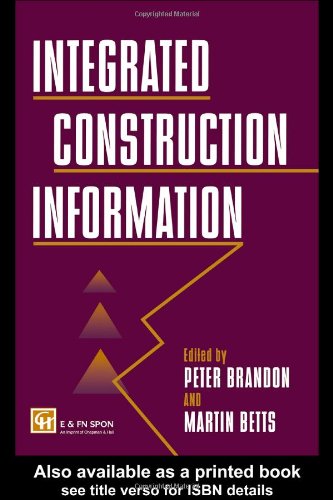

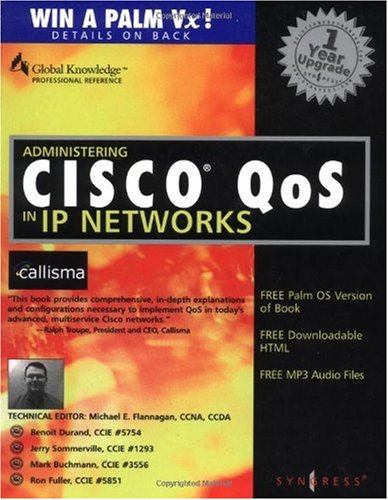

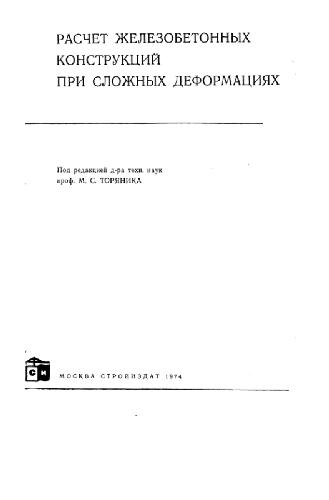
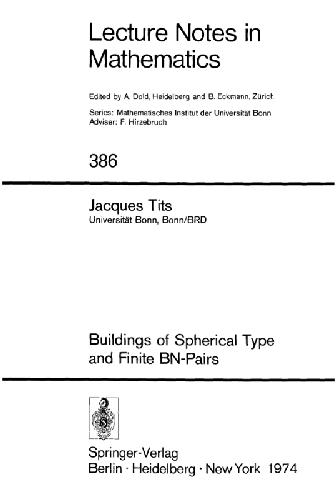
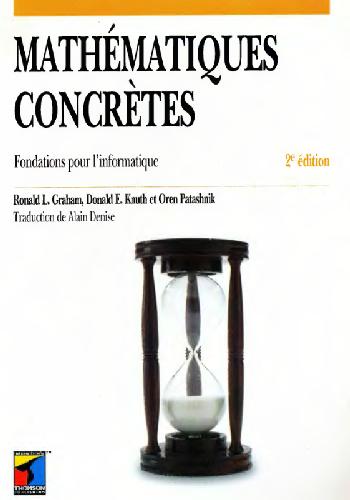
Reviews
There are no reviews yet.